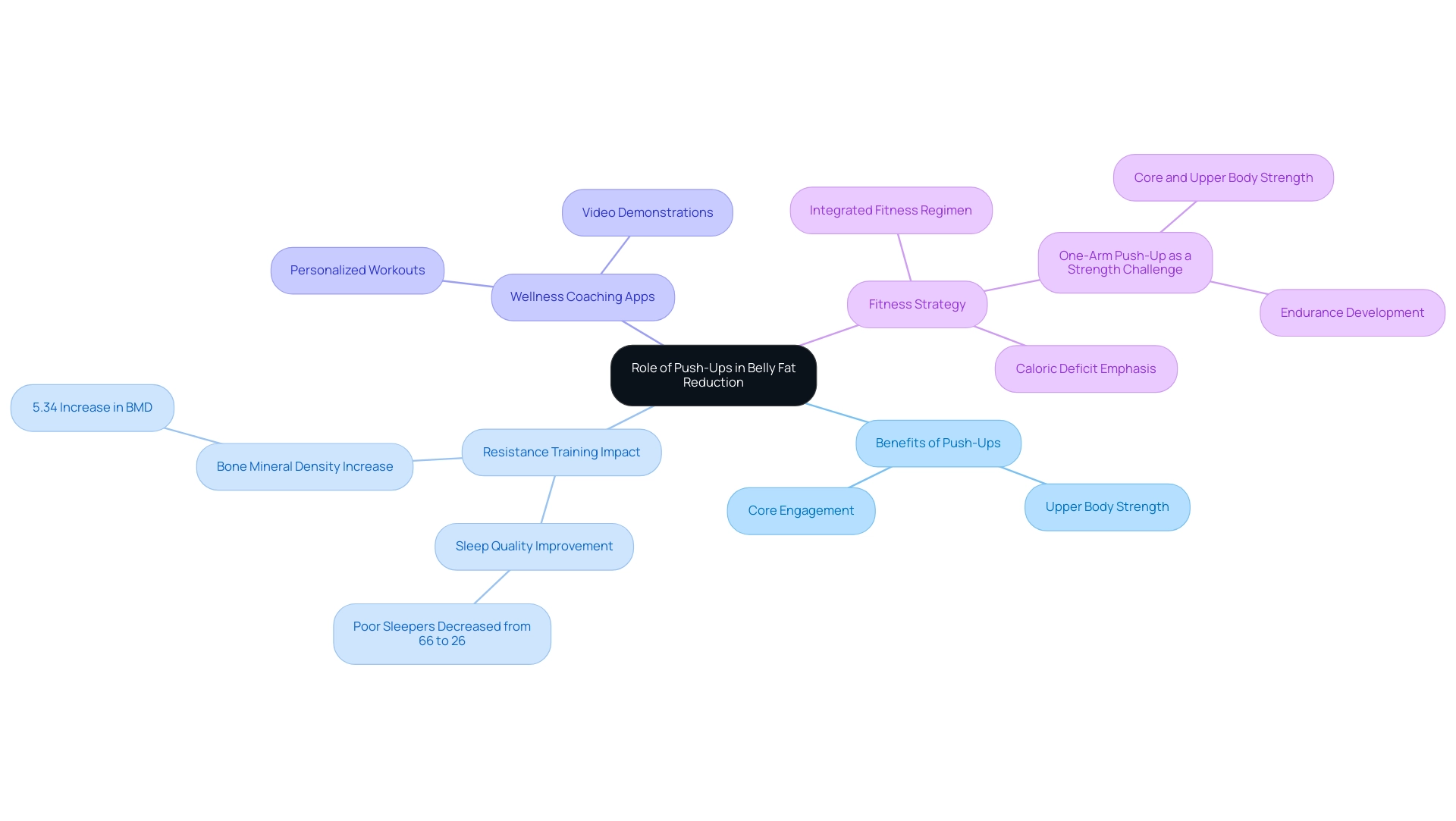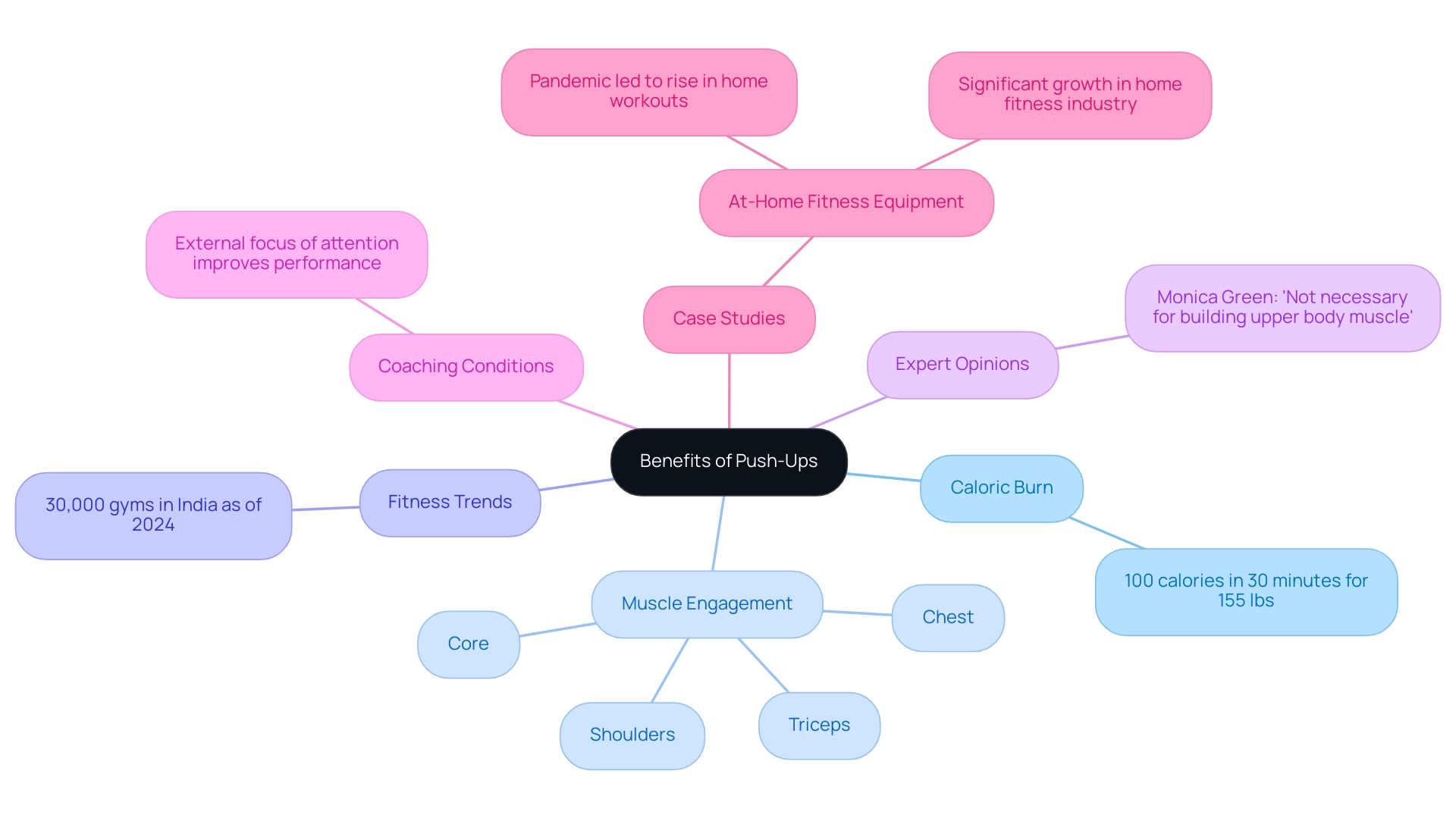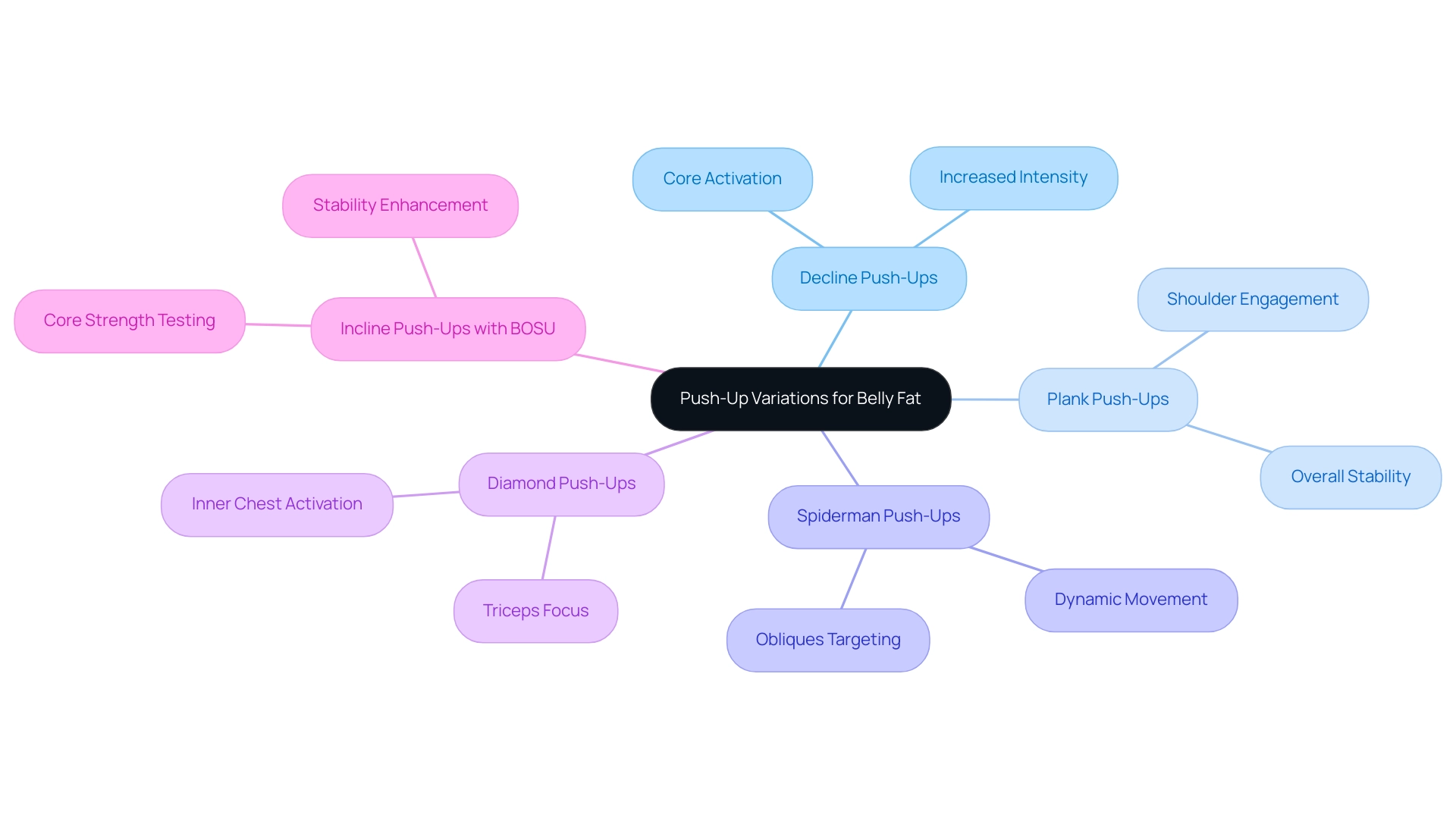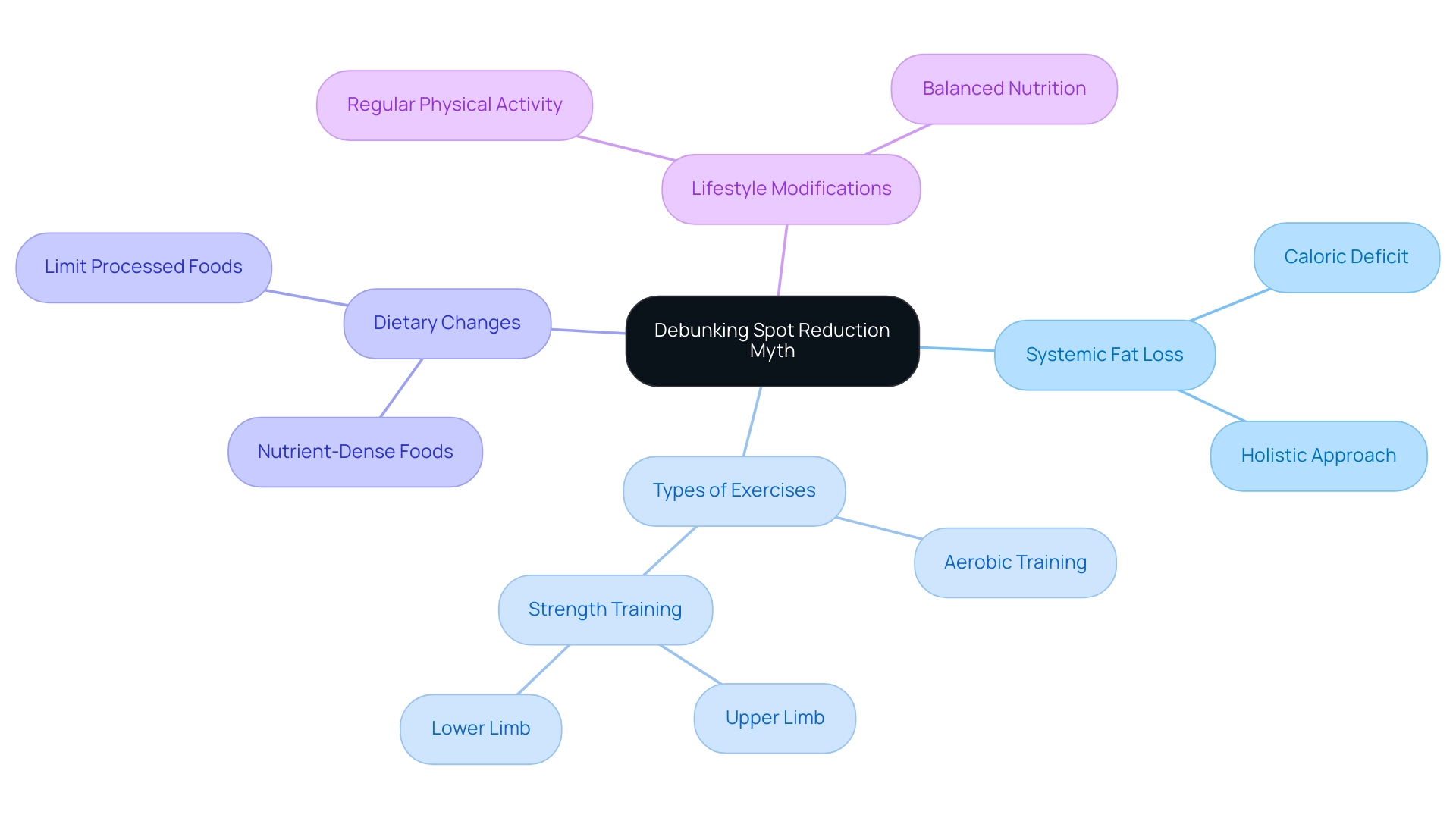Overview
Push-ups alone do not specifically burn belly fat, but they can contribute to overall fat loss when incorporated into a balanced fitness regimen that includes a caloric deficit and other forms of exercise. The article supports this by explaining that while push-ups engage multiple muscle groups and increase caloric expenditure, effective fat loss requires a combination of resistance training, cardiovascular activities, and a holistic approach to diet and exercise.
Introduction
In the quest for a toned physique and reduced belly fat, push-ups often emerge as a go-to exercise, but their benefits extend far beyond mere aesthetics. As a compound movement, push-ups engage multiple muscle groups, enhancing strength and promoting overall fitness. While they may not directly target belly fat, their role in a balanced workout regimen is pivotal for effective weight loss.
By integrating push-ups with:
- Cardiovascular activities
- Strategic nutrition
Individuals can create a holistic approach that not only burns calories but also fosters muscle engagement and boosts metabolic rates. This article delves into the multifaceted advantages of push-ups, exploring their effectiveness in fat reduction, the importance of combining them with other exercises, and the various techniques that can optimize results.
Understanding the Role of Push-Ups in Belly Fat Reduction
Push-ups are acknowledged as a powerful compound exercise, primarily engaging the muscles of the upper region such as the chest, shoulders, and triceps. Although they are not explicitly designed to target belly fat, it is important to consider whether do pushups burn belly fat, as their role in an integrated fitness regimen can significantly aid in overall body fat reduction. Research indicates that participants who engaged in low-intensity resistance training, including bodyweight exercises, experienced notable improvements in sleep quality and a reduction in poor sleep prevalence.
After just eight weeks, the percentage of poor sleepers dropped from 66% to 26%, illustrating how resistance training can enhance overall well-being, which is essential for fat loss. Additionally, a two-year study revealed a 5.34% increase in bone mineral density (BMD), highlighting the broader benefits of resistance training, including specific exercises. For those looking to maximize their workout efficiency, utilizing a wellness coaching app can provide personalized workouts and nutrition guidance tailored to individual health goals.
The effectiveness of this exercise in diminishing belly fat raises the question: do pushups burn belly fat, especially when incorporated into a balanced workout regimen that emphasizes caloric deficit and engages multiple muscle groups? This strategy not only elevates metabolic rates but also raises the question of whether do pushups burn belly fat, supporting fat loss throughout the body, including the abdominal region. As Shiraz Kanji aptly remarks,
Your article on exercise variations is excellent.
I do them in two sets of 35, followed by another 35. Slowly but get pain and not fast the way others do.
His experience highlights the significance of developing strength gradually while incorporating calisthenics into a comprehensive fitness strategy.
Furthermore, the one-arm push-up acts as an advanced activity that tests core and upper strength, demanding considerable endurance developed from practicing different push-up variations. Successfully executing a one-arm push-up demonstrates a high level of core and upper strength, reinforcing the effectiveness of this exercise in a comprehensive fitness program. The daily programming aspects of a wellness application guarantee that users remain focused on their objectives and promises, facilitating the integration of activities such as strength training efficiently into their routines.
Furthermore, the application features video demonstrations that assist users in visualizing the proper form and technique for exercises, along with movement flows that motivate users to maintain their physical activity and involvement.

How Push-Ups Contribute to Caloric Burn and Muscle Engagement
Push-ups are a highly effective activity for burning calories, leading many to ask, do push-ups burn belly fat, primarily due to their ability to engage multiple muscle groups simultaneously. When executing the exercise, the body actively utilizes the chest, shoulders, triceps, and core muscles, resulting in increased energy expenditure. Recent studies indicate that an individual weighing approximately 155 pounds can expend around 100 calories in just 30 minutes of push-up activity.
This caloric burn is especially important when combined with a balanced diet and supportive activity routines, contributing to a caloric deficit that is essential for effective weight loss. Moreover, the engagement of the core during the exercise not only aids in calorie burn but also raises the question of how much do push-ups burn belly fat, while helping to strengthen abdominal muscles and leading to a more toned physique over time. Remarkably, a high-calorie-expenditure group has demonstrated significant gains in muscle percentage and BMI, with a p-value of .05, highlighting the efficacy of activities such as bodyweight resistance movements.
As the fitness landscape evolves, with around 30,000 gyms now operational in India as of 2024, this growing interest in such exercises reflects a broader commitment to health and fitness. Fitness experts highlight that while these exercises are beneficial, the number of repetitions may not need to be excessive for optimal muscle building, as noted by Monica Green, Content Manager, who stated,
And having said all that, this many repetitions every day is almost definitely not necessary for building upper body muscle.
Additionally, external coaching conditions have been shown to influence performance, suggesting that the environment in which exercises are performed can further enhance their effectiveness.

The Importance of Combining Push-Ups with Other Exercises for Effective Weight Loss
While this exercise is undoubtedly beneficial, it should be part of a broader weight loss strategy rather than the sole focus. Research indicates that combining push-ups with cardiovascular activities such as running, cycling, or swimming significantly amplifies fat loss results. In fact, only 3.6% of adults who report no aerobic activity also participate in resistance training, highlighting the importance of integrating different types of physical activity for effective weight loss.
Cardio workouts are essential as they elevate heart rates and boost caloric expenditure, which is vital for reducing body fat. Moreover, incorporating strength training activities that target various muscle groups not only aids in building lean muscle mass but also boosts metabolic rates. As Stefanos Kales, a professor in the Department of Environmental Health at Harvard Chan School, emphasizes, "This study emphasizes the importance of physical fitness on health, and why clinicians should assess fitness during clinical encounters."
A comprehensive fitness program that incorporates push-ups alongside cardiovascular activities and strength training is crucial for individuals aiming to determine if do pushups burn belly fat effectively. This approach aligns with findings from a study highlighting that combining resistance training with aerobic activities leads to greater reductions in cardiovascular disease risk factors. In fact, the case study on the associations of resistance, aerobic, and combined training shows that such a holistic fitness regimen is linked to significantly lower risks of all-cause and cardiovascular mortality, underscoring the pivotal role of physical activity in maintaining overall health.
As we approach 2024, the trend of varied workout routines continues to gain traction, showcasing their effectiveness in achieving weight loss goals.

Effective Push-Up Variations and Routines for Targeting Belly Fat
To effectively incorporate different types of push exercises into a weight loss regimen, individuals should consider various variations that not only target different muscle groups but also enhance core engagement. For instance, Decline Push-Ups elevate the feet, increasing intensity and core activation. Plank Push-Ups, initiated from a plank position, engage the core and shoulders, improving overall stability.
The Spiderman Push-Ups introduce dynamic movement by bringing a knee to the elbow, effectively targeting the obliques. Meanwhile, Diamond Push-Ups, with hands placed close together, focus on the triceps and inner chest. A well-organized routine incorporating these variations—such as 3-4 sets of 10-15 repetitions—combined with other strength and cardio activities, can significantly contribute to understanding if do pushups burn belly fat.
Notably, an incline push-up using a BOSU ball not only tests core strength but also enhances core engagement and stability through its unstable surface, making it an excellent addition for those aiming to transform their fitness journey. As noted by Peloton instructor Cliff Dwenger, the chest muscle is more active than in the other variations, and can therefore produce more force, underscoring the value of these push-up variations in a comprehensive workout strategy. Furthermore, the effect size for the percentage change between traditional and modified push-ups is 1.08, indicating a significant improvement in effectiveness.
Additionally, data suggests that there are differences in muscle activation patterns between trained and untrained females, which may influence how individuals benefit from these push-up variations.

Debunking Myths: The Truth About Spot Reduction and Belly Fat
One of the most enduring myths in fitness is the notion of spot reduction—the belief that targeted activities can result in fat loss in specific regions. Research suggests that fat reduction is a systemic process driven by a caloric deficit rather than isolated activities. Mathias Forsberg Brobakken states,
The current randomized controlled trial provides evidence that aerobic endurance training of a specific segment may in fact lead to increased utilization of locally stored adipose tissue.
However, this does not equate to targeted fat loss. To effectively reduce belly fat, individuals should explore whether do pushups burn belly fat as part of a comprehensive approach that includes regular physical activity, balanced nutrition, and overall lifestyle changes.
Recognizing the latest findings, recent studies suggest that:
- Lower limb strength training can promote fat loss in that area.
- Upper limb strength training yields similar effects for the upper region, hinting at the nuanced possibilities of localized fat utilization.
Nevertheless, achieving sustainable fat loss necessitates a caloric deficit through a balanced diet rich in nutrient-dense foods and regular exercise. Notably, none of the supplements examined in recent studies provided a clinically meaningful reduction in body weight among overweight or obese people, underscoring the importance of focusing on dietary changes and physical activity rather than relying on supplements.
This was highlighted in a case study titled 'Creating a Caloric Deficit for Fat Loss,' which emphasizes that a holistic approach, rather than attempting to target specific fat areas, is essential for long-term success in weight management.

Conclusion
Incorporating push-ups into a fitness regimen offers a multitude of benefits that extend beyond aesthetics. As a compound exercise, push-ups engage various muscle groups, including the chest, shoulders, triceps, and core, contributing to overall strength and endurance. While they may not directly target belly fat, their inclusion in a balanced workout routine can enhance metabolic rates and support effective weight loss when combined with cardiovascular activities and proper nutrition.
The effectiveness of push-ups is amplified when integrated with other exercises. Research demonstrates that combining push-ups with cardio workouts significantly enhances fat loss results, emphasizing that a holistic approach is essential for achieving fitness goals. Variations of push-ups can further engage different muscle groups and improve core stability, making them a versatile addition to any workout plan.
Debunking the myth of spot reduction highlights the importance of a comprehensive strategy for fat loss. Sustainable results come from a caloric deficit achieved through a combination of regular exercise, balanced nutrition, and lifestyle changes. By understanding the role of push-ups within this framework, individuals can maximize their workout effectiveness and work toward their fitness aspirations more efficiently. Embracing a well-rounded exercise routine that includes push-ups not only fosters a toned physique but also promotes overall health and well-being.




